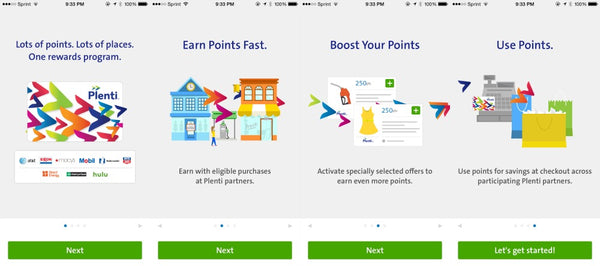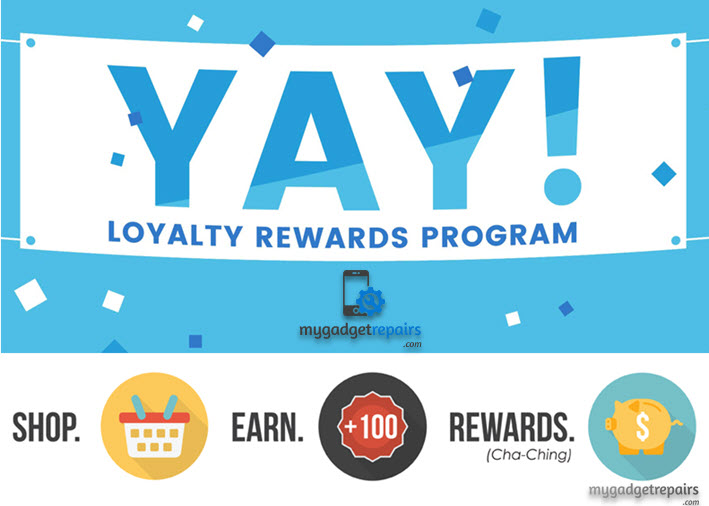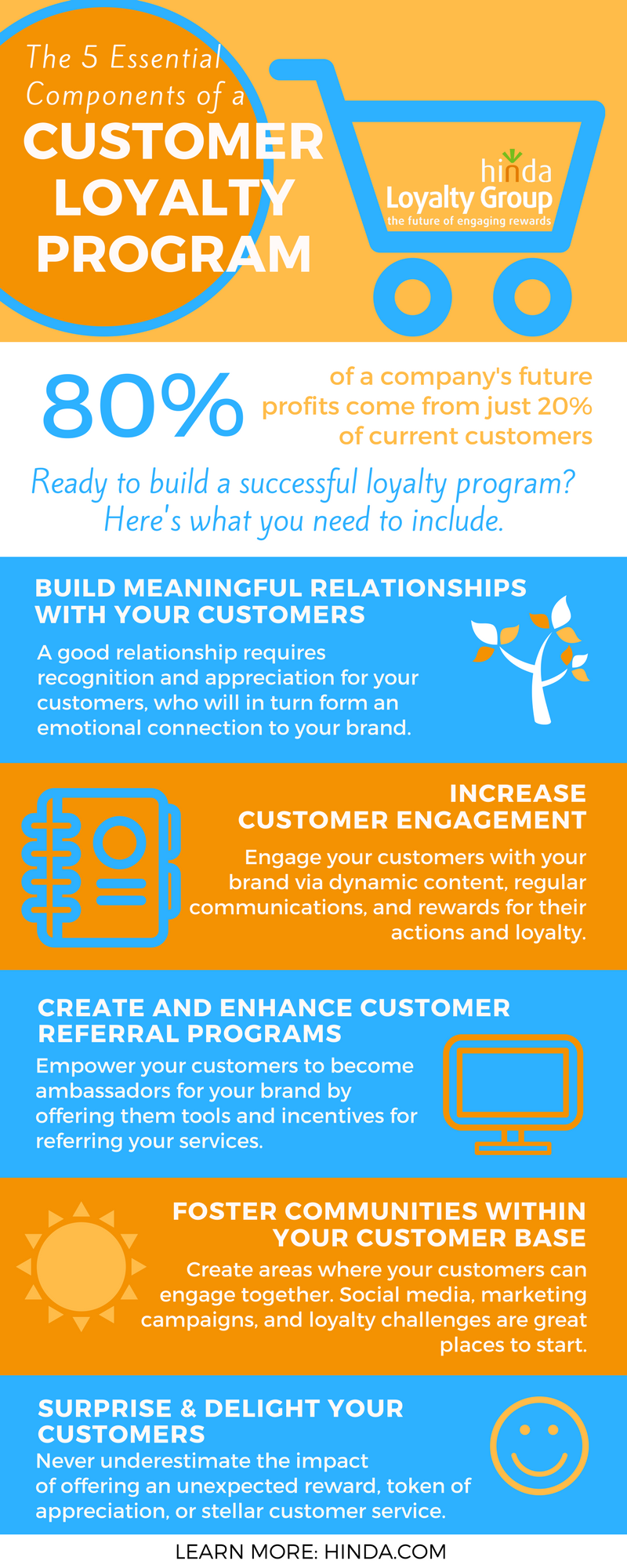All Categories
Featured
Table of Contents
In 17325, Hailey Clarke and Makayla Patel Learned About Marketing Efforts

What if you could grow your organization without increasing your spending? In reality, what if you could in fact decrease your costs but increase your sales, year after year? Would you do it? If you're an organization owner, then you'll likely provide a resounding 'yes', a basic answer to an even simpler concern.
A rewards program tracks and benefits certain spending habits by the client, offering unique benefits to devoted consumers who continue to patronize a particular brand name. The more that the client spends in the shop, the more benefits they receive. Gradually, this reward builds faithful customers out of an existing consumer base.

Even if you currently have a benefit program in location, it's a great concept to dig in and completely understand what makes consumer commitment programs work, in addition to how to implement one that costs you little cash and time. Don't fret, I'll help you with that. I'll break down the primary benefits of a commitment program and the finest ways to create faithful consumers.
Let's dig in. Customer commitment is when a client returns to work with your brand over your rivals and is mostly affected by the favorable experiences that the client has with your brand name. The more favorable the experience, the more most likely they will go back to go shopping with you. Consumer loyalty is extremely crucial to organizations since it will assist you grow your business and sales faster than an easy marketing plan that focuses on recruiting brand-new consumers alone.
A couple of ways to determine client loyalty include:. NPS tools either send out a brand name efficiency study by means of email or ask customers for feedback while they are checking out a service's site. This details can then be used to better comprehend the likelihood of customer loyalty. A repurchase ratio determines the ratio of repeat buyers versus one-time buyers.
Customer commitment index (CLI). The CLI tracks customer commitment with time and resembles an NPS survey. Nevertheless, it considers a few additional factors on top of NPS like upselling and redeeming. These metrics are then used to assess brand name commitment. A client loyalty program is a marketing strategy that rewards consumers who make purchases and engage with the brand name on a continued basis.
Client benefits programs are created to incentivize future purchases. This motivates them to continue working with your brand. Customer commitment programs can be set up in various methods. A popular client commitment program rewards clients through a points system, which can then be invested in future purchases. Another kind of client commitment program may reward them with member-exclusive advantages or complimentary presents, or it may even reward them by donating cash to a charity that you and your clients are equally passionate about.
In Macomb, MI, Mylie Decker and Joe Mills Learned About Gift Guides
By providing benefits to your customers for being devoted and supportive, you'll construct a rapport with them, deepening their relationship with your brand name and ideally making it less likely for them to switch to a rival. You've likely seen customer commitment programs in your own shopping experience, whether at your favorite cafes or your most frequented grocery shops.
But even if everyone is doing it does not mean that's a good enough factor for you to do it too. The better you understand the advantages of a client rewards program, the more clearness you will have as you create one for your own shop. You will not be distracted by amazing benefits and complex loyalty points systems.
Keep in mind: work smarter, not harder. Consumer retention is the main advantage of a benefits program that acts as a structure to all of the other advantages. As you offer incentives for your existing customer base to continue to buy from your store, you will provide your shop with a stable flow of cash month after month.
By growing your retention rate, you can stop spending as much time or cash on increasing your total number of consumers. Why is this essential? Faithful clients have a higher conversion rate than brand-new clients, meaning they are most likely to make a deal when they visit your store than a brand-new consumer.
By increasing your retention rate by just 5 percent, you can increase your revenues by 25 percent and as much as by 95 percent. Needless to state, your retention rate matters. Key Takeaway: If you wish to substantially increase your profits, offer incentives for your existing customers to continue to patronize your store.
And you won't need to spend money on marketing to get them there. Consumer acquisition (aka generating brand-new consumers) takes a great deal of effort and cash to persuade total strangers to trust your brand name, concerned your shop, and attempt your products. In the end, any cash earned by this new customer is eclipsed by all of the cash spent on getting them there.
Secret Takeaway: If you wish to minimize costs, concentrate on customer retention instead of client acquisition. When you concentrate on supplying a positive customized experience for your existing consumers, they will naturally inform their loved ones about your brand. And with each subsequent deal, devoted clients will inform even more individuals per transaction.
In 6109, Marley Diaz and Rhett Velez Learned About Online Community
The very best part? Because these new customers originated from trusted sources, they are most likely to become devoted customers themselves, spending more usually than brand-new clients generated by other marketing efforts. The Chase Ultimate Rewards program, for example, uses major benefits for people who travel a lot.
The 'ultimate benefits' that Chase cardholders receive consist of 2x points per dollar invested in all travel purchases as well as main rental cars and truck insurance coverage, no foreign deal fees, trip cancellation insurance, and purchase security. For individuals who travel a lotand have non reusable earnings to do sothere is an enormous reward to spend money through the ultimate benefits program.
This entire process makes redeeming rewards something worth extoling, which is exactly what lots of cardholders end up doing. And to help them do it, Chase uses a perk for that too. Key Takeaway: Make it easy for your consumers to extol you and they will get the word out about your buy complimentary.
Once you get the fundamentals down, then using a commitment rewards app can assist take care of the technical details. Here are the actions to start with developing your client commitment program. No consumer wants to buy products they don't desire or require. The same opts for your commitment program.
And the only method to customize an alluring customer loyalty program is by thoroughly understanding your consumer base. The finest method to do this? By implementing these strategies: Build customer contact details anywhere possible. Ensure your company is continuously developing an in-depth contact list that allows you to gain access to existing consumers as frequently and as quickly as possible.

Track client behavior. Know what your clients desire and when they desire it. In doing so, you can anticipate their wants and requires and supply them with a loyalty program that will please them. Categorize customer individual characteristics and choices. Take a multi-faceted approach, don't limit your loyalty program to simply one opportunity of success.
Motivate social networks engagement. Frame strategies to engage with your customers and target audience on social media. They will soon supply you with extremely insightful feedback on your products and services, allowing you to much better understand what they expect from your brand. Once you have worked out who your customers are and why they are doing organization with your brand, it's time to choose which type of loyalty rewards program will motivate them to stay devoted to you.
In 46368, Eduardo Butler and Jacquelyn Brown Learned About Vast Majority
Nevertheless, the most common client commitment programs centralize around these main principles: The points program. This type of program concentrates on gratifying consumers for every purchase they make with points in a point system. These points can then either be utilized on future purchases or put towards some kind of benefit.
The paid program. This type of program needs consumers to pay a one-time or annual fee to join your VIP list. Loyalty members who belong to this list have the ability to gain access to distinct benefits or member-exclusive benefits. The charity program. This type of program is a bit different than the others.
This is attained by motivating them to do business with the brand name and, in return, their loyalty will be rewarded with a contribution to a charity. The tier program. This kind of program focuses on increasing levels of brand name loyalty. The more devoted a client is to a brand name, the greater tier they will climb up to and the better the benefits they will receive.
This type of program is just as it sounds, where one brand name partners with another brand name to supply their cumulative audiences with exclusive member discounts or deals that they can redeem while doing organization with either brand. The community program. This type of program incentivizes brand loyalty by providing its members with access to a like-minded neighborhood of people.
This kind of program is fairly similar to paid programs, however, the membership cost occurs regularly instead of a one-time payment. Next, select which client interactions you wish to reward. Base these benefits around which interactions benefit your service the many. For example, to assist your company out, you can offer action-based rewards like these: Reward consumers more when doing company with your brand name throughout a sluggish period of the year or on an infamously sluggish day of business.
Reward consumers for engaging with your brand on social networks. Incentivize specific products you are trying to move rapidly. Incentivize purchases that are over a specific dollar amount. The idea is to make your client loyalty program as simple as possible for your customers to use. If your client commitment program isn't personnel friendly, isn't simple to track, is too pricey to run, or isn't easy for your customers to utilize or understand, then personnel and customers alike most likely will not make the most of it.
To get rid of these barriers to entry, think about integrating a customer commitment software application that will assist you continue top of all of these aspects of your program. Some quality client program software include:. CandyBar is a digital punch card program. It works by tracking your consumer's purchases through an app on a computer system, phone, or tablet.
In 15108, Tatiana Woodward and Mitchell Sawyer Learned About Customer Loyalty Program
Loyalty members can then examine their benefits by means of text and organization owners can utilize the program to contact their consumers. Yotpo. Yotpo is a cloud-based client loyalty platform solely for eCommerce services. This software application is particularly proficient at gathering every type of user-generated content, handy for tailoring a much better customer experience.
Loopy Loyalty is a helpful client loyalty software for organizations that predominantly use Google Wallet or Apple Pay as their payment platforms. The software creates a digital loyalty card that sends push notifications to their consumers' phones when they remain in close distance to their brick and mortar shop. Once you've put in the time to choose which consumer loyalty techniques you are going to implement, it's time to start promoting and registering your very first loyalty members.
Usage in-store ads, integrate call-to-actions on your site, send promotions through e-mail newsletters, or upload advertising posts on social networks to get your clients to sign up with. It is necessary to comprehend the main benefits of a client rewards program so that you can produce a tailored experience for both you and your consumer.
Think about it. You understand what sort of items your consumers like to purchase however do you know what brings them back, day after day, week after week? What makes them choose your store over the store throughout the street? What makes them your client and not the consumer of your greatest competitor? Surprisingly, the responses to these questions don't come down to discount rate rates or quality products.
Table of Contents
Latest Posts
In 1824, Douglas Pugh and Harmony Lara Learned About Customer Loyalty
In 2720, Richard Archer and Harmony Lara Learned About Marketing Efforts
In Bangor, ME, Rocco Zamora and Lina Vasquez Learned About Linkedin Learning
More
Latest Posts
In 1824, Douglas Pugh and Harmony Lara Learned About Customer Loyalty
In 2720, Richard Archer and Harmony Lara Learned About Marketing Efforts
In Bangor, ME, Rocco Zamora and Lina Vasquez Learned About Linkedin Learning